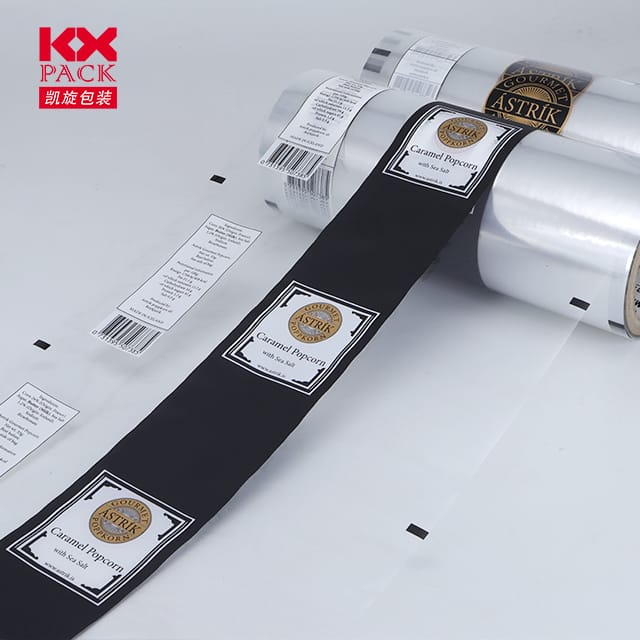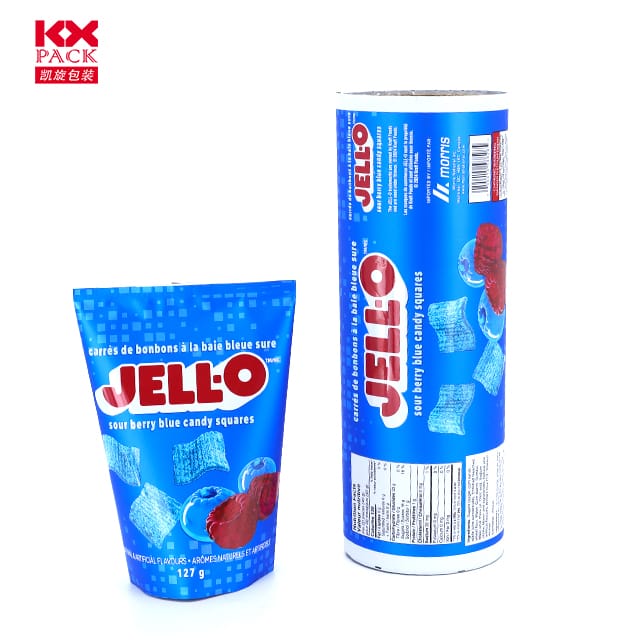The Rise of Printed Flexible Packaging Film: Where Innovation Meets Sustainability
Printed Flexible Packaging Film
In an era where consumers demand both visual appeal and environmental responsibility, Printed Flexible Packaging Film έχει εμφανιστεί ως αλλαγή παιχνιδιού. This dynamic material combines high-impact branding with functional benefits, transforming how products are packaged, marketed, και καταναλώθηκε. Let’s explore why this technology is reshaping industries—and why it’s here to stay.
Why Printed Flexible Packaging Film? A Multifaceted Advantage
- Brand Differentiation at Shelf Level
Printed flexible films allow brands to create eye-catching designs with up to 10-color printing capabilities, from vibrant gradients to matte finishes. Unlike traditional labels, graphics are printed directly onto the film, eliminating scuffing risks and ensuring consistent quality. Για παράδειγμα, snack brands use shrink-sleeve films to wrap irregularly shaped products, achieving 360-degree branding that stands out in crowded aisles. - Sustainability Meets Performance
The global printed flexible packaging market, εκτιμώ $101.48 δισεκατομμύρια 2025, is projected to grow at a 5.84% CAGR διά μέσου 2030. This surge is driven by demand for recyclable and biodegradable materials. Καινοτομίες όπως Βόμβα (Πολυπροπυλενίου με διαξονικά προσανατολισμό) ταινίες now offer recyclable options without compromising barrier properties, reducing food waste by up to 30% through enhanced shelf-life preservation. - Cost-Efficiency for High-Volume Production
Flexographic printing remains the dominant method for long runs, accounting for 46.73% of the market share in 2024 due to its cost-effectiveness. Ωστόσο, digital printing is gaining traction, enabling on-demand customization for e-commerce brands. Hybrid systems that combine both methods are emerging as a sweet spot for flexibility and scale.
Βασικές εφαρμογές: From Food to Pharmaceuticals
- Τροφή & Ποτό:
Stand-up pouches with spouts are replacing rigid containers for sauces and infant nutrition, offering portability and resealability. Retortable films withstand high-temperature sterilization, ensuring safety for ready-to-eat meals. - Υγειονομική περίθαλψη & Προσωπική φροντίδα:
Cold-seal packaging, used for temperature-sensitive chocolates and pharmaceuticals, relies on printed films with precise registration marks to align seals with graphics, maintaining product integrity. - Ηλεκτρονικό εμπόριο:
Digital printing enables serialized codes and geo-targeted promotions on mailer bags, enhancing supply chain traceability and customer engagement.(Printed Flexible Packaging Film)
Technological Advancements Driving the Market
- Material Innovations:
- Metallized Films: Add a premium look while blocking UV light and oxygen.
- High-Shrink Films: Conform tightly to products for a sleek finish.
- Λιπασματοποιήσιμες ταινίες: Κατασκευασμένο από φυτικά πολυμερή, these decompose within 180 ημέρες υπό βιομηχανικές συνθήκες.
- Printing Techniques:
- Flexography: Ideal for large batches, with plates lasting up to 1 million impressions.
- Εκτύπωση βαρύτητας: Offers unmatched detail for high-end cosmetics packaging.
- Digital Inkjet: Reduces setup time by 70%, perfect for small-batch runs.
- Smart Packaging Integration:
Printed films now incorporate QR κωδικούς και Ετικέτες NFC for interactive experiences, such as tracking carbon footprints or unlocking recipes.
Προκλήσεις & Future Outlook
Despite its promise, the industry faces hurdles:
- Υποδομή ανακύκλωσης: Only 14% of flexible packaging is recycled globally, due to multi-layer structures.
- Κανονιστική συμμόρφωση: Brands must navigate evolving standards like the EU’s Single-Use Plastics Directive.
Ακόμη, the future is bright. Με 2028, the market is expected to reach$341.6 billion, τροφοδοτείται από:
- Sustainable Substrates: Bio-based PE and PLA films.
- Advanced Adhesives: Water-based and solvent-free options for easier recycling.
- AI-Driven Design: Tools that optimize ink usage and reduce waste.
συμπέρασμα: A Canvas for Innovation
Printed Flexible Packaging Film is more than just a container—it’s a strategic tool for brands to tell their story, reduce environmental impact, and meet evolving consumer expectations. Ως τεχνολογία προχωράει, expect to see even more creative applications, from edible inks to self-healing materials.
For businesses looking to stay ahead, the message is clear: Embrace flexibility, print with purpose, and package sustainably. The future of packaging isn’t just flexible—it’s intelligent.
What’s your take on Printed Flexible Packaging Film? Μοιραστείτε τις σκέψεις σας στα παρακάτω σχόλια! 🌍✨






